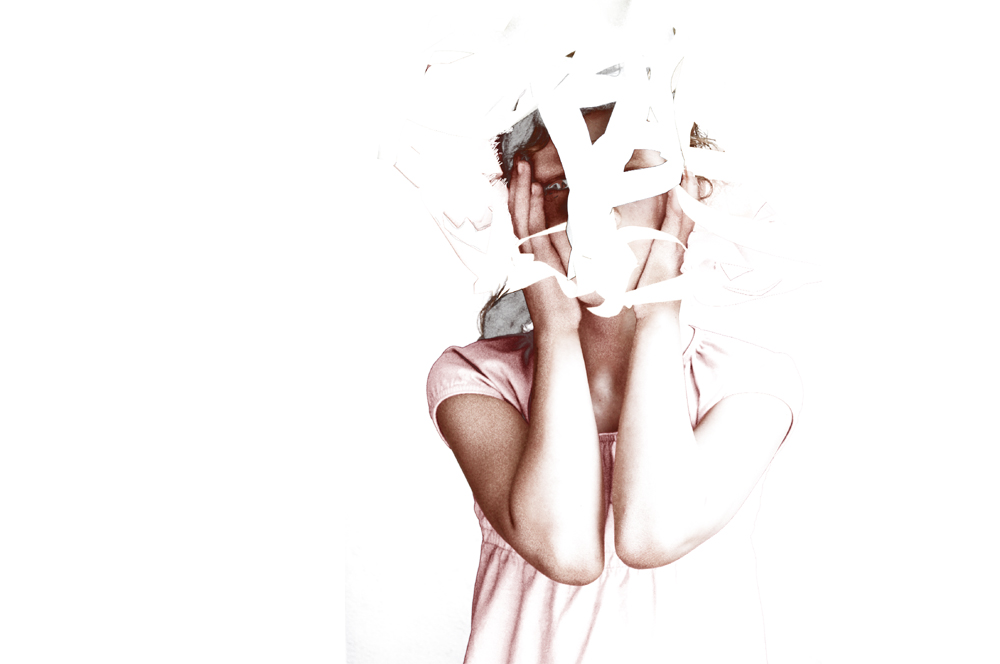And yet another Game Room game - hide and seek with boy and ball.
Hide me [1]
Posted by Everdien on 6/28/11 • Categorized as All posts
Drawing again – Hide Me in another form – keep coming back to the game of hide-and-seek. Small kids hide by putting their hands in front of their faces, being convinced that they become invisible that way. Does this argue that they have not the ability to distance themselves from themselves, see themselves from a third-point or third-party perspective?
Following text was part of my game-cum-essay:
It is difficult to perceive perception – we are bound by and to our position in time and space. To position ourselves, we have to do something that is by its nature contrary: we must both see ourselves in the here and now and abstract ourselves from it. Abstraction in time is handled by the narrative of identity: the story of who we are, where we came from and where we think to go. Abstraction in space is handled by the mental map we construct, depicting our surroundings and placing ourselves on it so as to position ourselves in respect to other people, objects and landscapes.
Games, when analyzed for their perceptual requirements, turn out to be even more complex situations. When playing a game, and playing it well, one alternates between – or performs simultaneously – at least three different modes of perception.
The first mode is that of individual perception: who am I, where am I situated, what does my environment look like, and what actions am I asked to or able to perform? Games act as ready-mades in this respect, as models for action that enable us to situate ourselves at a glance and establish immediate relations with other players. They also enable us to draw upon a store of acts and decisions learned when playing games before. This may be as simple as the series of rules that enable us to recognize a game of hide and seek and to play this particular game, or as complex as our understanding of the game of chess and our store of knowledge about chess variations and moves.
This store of knowledge enhances our pleasure in the game and provides a framework that frees us to focus intently on the play experience itself. The predictability of games make them ideally suited for the trance-like playing that is the hallmark of the second mode of perception: immersed perception. When immersed in a game, players’ perception, their reactions and interactions all take place within the framework of the game. This is the state in which we can only play when not knowing the rules any more, forgetting everything we were ever taught.
Then there is a third mode of perception. Full participation in a game requires immersion, while at the same time it enhances individual perception to a point where perception cannot be fully anticipated or controlled by the individual. Gadamer asserts the primacy of the play over individual consciousness: “The players are merely the way the play comes into being.” The game thus becomes self-moving, requiring us to play along with what we bring into being. It takes us out of ourselves and makes us part of a larger whole. Perception of this larger whole I will call meta-perception: the point where the individual becomes part of a larger system, and this larger system becomes part of the individual. “This is the moment you are ‘ín form’ in both senses. It feels good and there is this whole hectic feeling of extension into the world that is being ‘informed’.“
Gerelateerd:
-
Game room games (3)
-
Hide Me [2]
And did another one -- and another -- and another. I like doing stuff…
| « Dam Square scouted [1] | <-- previous post | next post --> | Dam Square scouted [2] » |
|---|








